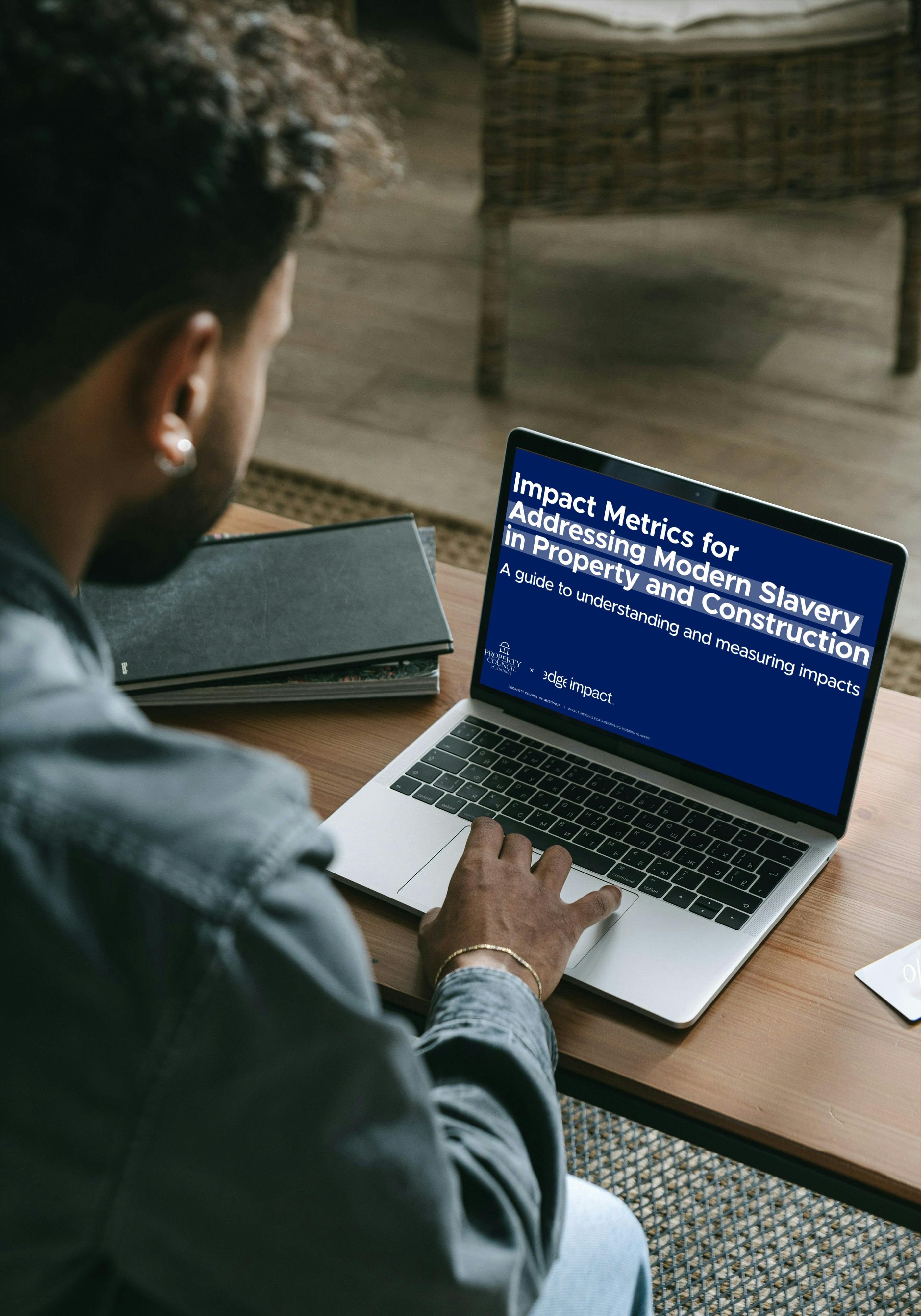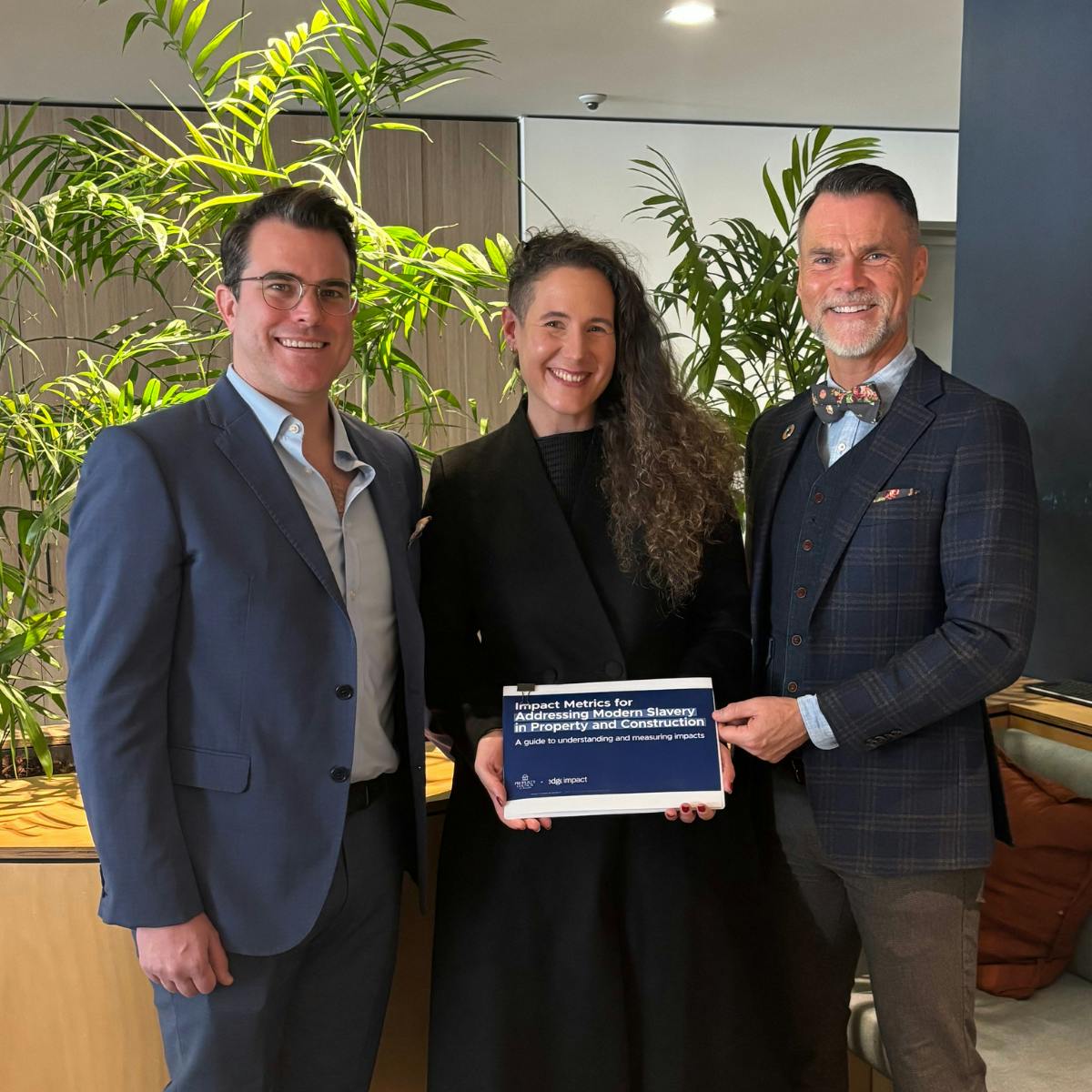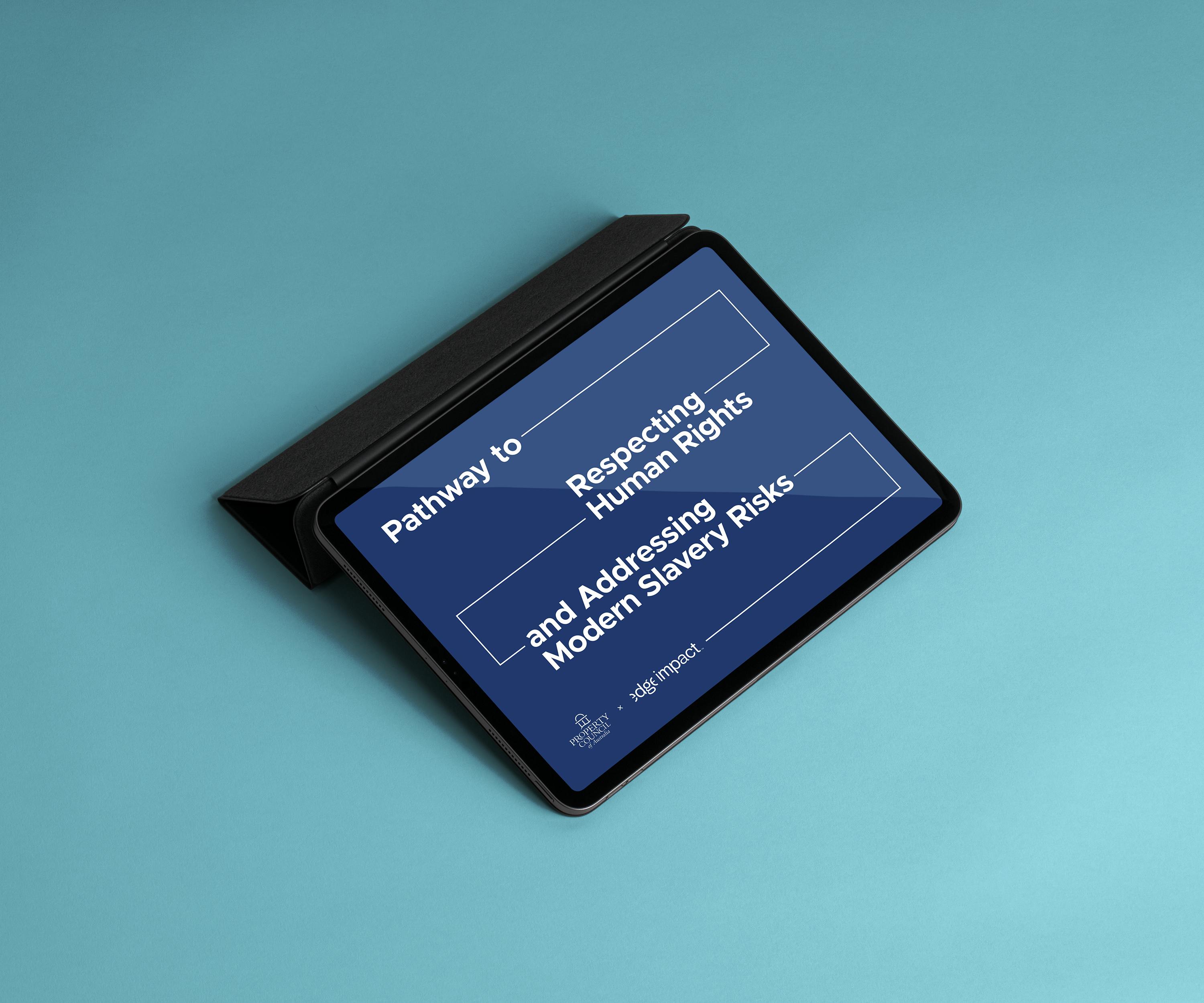
New Guide Helps Property Sector Measure Modern Slavery Impact
In 2024, the Property Council of Australia, in collaboration with Edge Impact, launched the 'Pathway to Respecting Human Rights and Addressing Modern Slavery Risks'.
Now, we're excited to introduce the next phase: 'Impact Metrics for Addressing Modern Slavery in Property and Construction'.
This guide is Australia’s first tailored metrics framework to help property and construction businesses understand, measure, and improve the real-world impacts of their modern slavery risk management efforts.
It introduces four key impact pillars:
- Governance
- Supply Chain
- Grievance and Remediation
- Collaboration
Across these areas, the guide provides:
- Clear, scalable metrics for organisations at different levels of maturity
- A structure to move from inputs and activities to long-term outcomes and impacts
- Practical tools for use in procurement, governance, reporting, and worker engagement
- Real-world examples and insights informed by the voices of those most affected
Why is this resource groundbreaking?
1. It responds directly to key findings of the McMillan Review
The Independent Review of the Modern Slavery Act 2018 (Cth), led by Professor John McMillan AO, highlighted major deficiencies in how companies assess effectiveness:
“A large proportion of statements do not clearly articulate how a reporting entity assesses the effectiveness of its actions.” - McMillan Review, 2023
This PCA-led resource directly addresses that gap, providing a robust, sector-specific framework to help businesses demonstrate the effectiveness of their actions and make real progress toward protecting people.
It also reflects the review’s calls for:
- Clearer benchmarks for performance
- Stronger stakeholder engagement
- A move toward due diligence-based regulation
This guide is part of a broader suite of initiatives led by the PCA’s Modern Slavery Working Group, including the Pathway to Respecting Human Rights (2024).
Together, these tools reflect a cohesive, strategic and proactive model for modern slavery governance. One that sets a new benchmark for sector-wide coordination.
By bringing together businesses, NGOs, frontline organisations and people with lived experience, the PCA has demonstrated what leadership looks like in practice.

2. It centres the voices of people with lived experience
Through partnership with the Australian Red Cross, this project was shaped by the direct insights of people who have experienced exploitation. These individuals were not only consulted, they were integral in guiding the ambition, tone, and practical relevance of the resource.
Their perspectives challenged us to go beyond performative action and focus on what would truly make a difference. For example, prioritising metrics that captured worker confidence in grievance mechanisms, clarity of rights at induction, and safe conditions over box-ticking exercises.
As one participant put it:
“Companies should share real stories of how they’ve improved things for workers... not just what they’re doing, but what’s changed. And if they’ve found problems - say it. And say what they did about it.”
- Australian Red Cross Lived Experience Participant
The McMillan Review reinforced this:
“The more meaningful the engagement with stakeholders and affected groups, the more likely that human rights risks will be properly identified and addressed.” - McMillan Review, 2023
By embedding lived experience leadership, the PCA Working Group has not only met this expectation it has set a new standard for what meaningful engagement looks like in the development of sector-wide human rights governance tools.
3. It shifts the sector from compliance to impact
Most modern slavery statements focus on activity not outcomes. This guide flips that script by helping companies:
- Measure whether their actions have changed conditions for workers
- Identify gaps and areas for improvement
- Prioritise investments where they’ll have the most impact
It supports a shift toward accountability, not just awareness.
4. It is designed for use by the full value chain
Whether a business is a developer, contractor, or property manager, the guide is relevant and actionable. It enables alignment across the supply chain and supports a shared language for risk, progress, and impact.

How should businesses use this resource?
We want businesses to:
- Use it as a strategic tool, not just a compliance reference
- Select priority metrics that match their risk profile and maturity — and build from there
- Integrate it into board reporting, procurement processes, training, and supplier engagement
- Use worker voice data where possible to validate effectiveness and identify gaps
- Enhance their modern slavery statements with meaningful KPIs and outcome data
- Continuously review and improve, using the framework to guide investment in what works
PCA’s leadership in modern slavery governance
This guide is part of a broader suite of initiatives led by the PCA’s Modern Slavery Working Group, including the Pathway to Respecting Human Rights (2024). Together, these tools reflect a cohesive, strategic and proactive model for modern slavery governance. One that sets a new benchmark for sector-wide coordination.
By bringing together businesses, frontline organisations and people with lived experience, the PCA has demonstrated what leadership looks like in practice:
- A community of practice committed to lifting the floor and raising the ceiling
- A whole-of-industry approach to systemic risk
- A replicable model that other high-risk industries should follow
This work doesn’t just reflect compliance. It reflects intentional, collective leadership, and it shows that industry, when united, can design solutions that protect the most vulnerable.
RELATED ARTICLES




